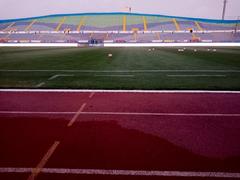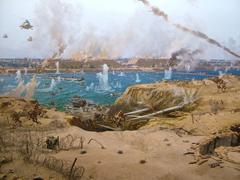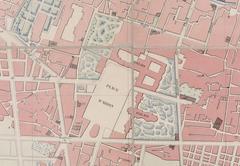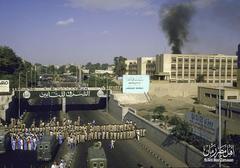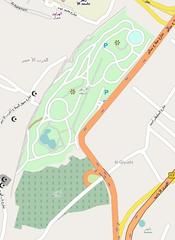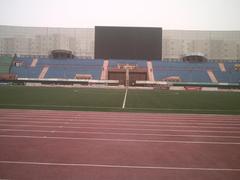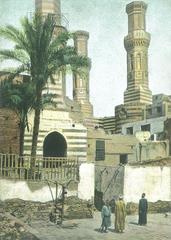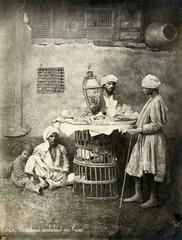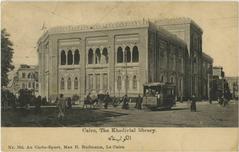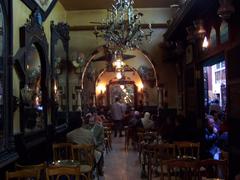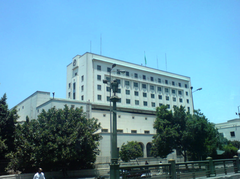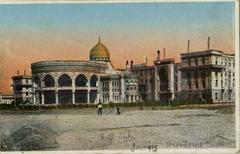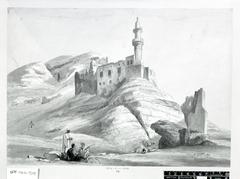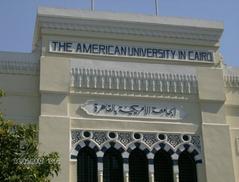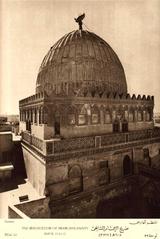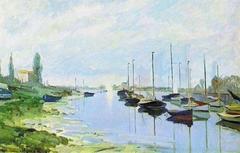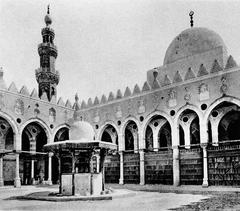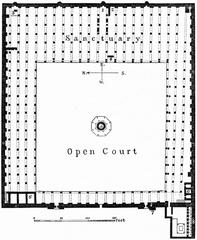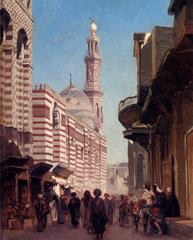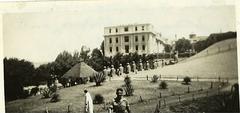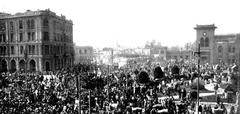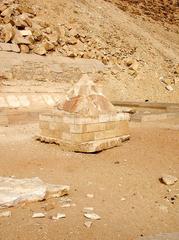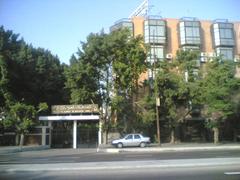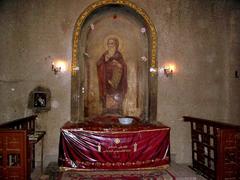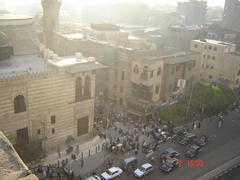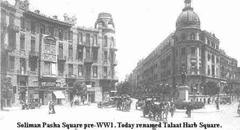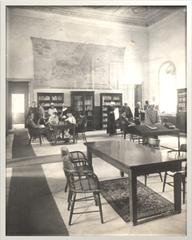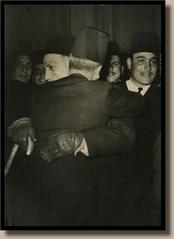Visiting Nilometer in Al Nozha, Egypt: Hours, Tickets, and Tips
Date: 24/07/2024
Introduction
The Nilometer, located on the southern tip of Rhoda Island in Cairo, Egypt, is one of the most fascinating and historically significant structures from ancient Egyptian civilization. This ancient device was primarily used to measure the water level of the Nile River, a critical task that influenced agriculture, taxation, and the overall prosperity of the region. The idea of the Nilometer dates back over 5,000 years to the Pharaonic Period, with its development and refinement continuing through the Roman and Abbasid periods. The Rhoda Island Nilometer, ordered by the Abbasid Caliph al-Mutawakkil in 861 AD, is one of the best-preserved examples of this technology (The Vintage News).
The Nilometer’s importance extended beyond its practical function. It held significant cultural and religious value, symbolizing the divine connection between the pharaohs, the gods, and the fertility of the land. The measurements it provided were essential for planning agricultural activities and determining tax rates, making it a cornerstone of ancient Egyptian administration. The Rhoda Island Nilometer is an architectural marvel, featuring an intricately designed stilling well and a central marble column marked with cubits, the ancient unit of measurement (History of Egypt).
Today, the Nilometer is a popular tourist attraction that offers visitors a unique glimpse into Egypt’s rich history. It stands as a testament to the advanced engineering and hydrological understanding of ancient civilizations. Whether you are a history enthusiast, a curious traveler, or someone interested in ancient engineering, visiting the Rhoda Island Nilometer is an experience that offers both educational value and a deep connection to Egypt’s past (Atlas Obscura).
Table of Contents
- [Exploring the Rhoda Island Nilometer - Visiting Hours, Tickets, and Historical Significance in Cairo](#exploring-the-rhoda-island-nilometer---visiting-hours-tickets-and-historical-significance-in-cairoexploring-the-rhoda-island-nilometer---visiting-hours-tickets-and-historical-significance-in-cairo)
- [History of the Nilometer](#history-of-the-nilometerhistory-of-the-nilometer)
- [Origins and Early Use](#origins-and-early-useorigins-and-early-use)
- [Development and Refinement](#development-and-refinementdevelopment-and-refinement)
- [The Rhoda Island Nilometer](#the-rhoda-island-nilometerthe-rhoda-island-nilometer)
- [Historical Significance](#historical-significancehistorical-significance)
- [The Fath al-Khalij Festival](#the-fath-al-khalij-festivalthe-fath-al-khalij-festival)
- [The Decline of the Nilometer](#the-decline-of-the-nilometerthe-decline-of-the-nilometer)
- [Architectural Features](#architectural-featuresarchitectural-features)
- [Other Notable Nilometers](#other-notable-nilometersother-notable-nilometers)
- [Visitor Information](#visitor-informationvisitor-information)
- [Travel Tips](#travel-tipstravel-tips)
- [Nearby Attractions](#nearby-attractionsnearby-attractions)
- [FAQ](#faqfaq)
- [Conclusion](#conclusionconclusion)
- [History of the Nilometer](#history-of-the-nilometerhistory-of-the-nilometer)
Exploring the Rhoda Island Nilometer - Visiting Hours, Tickets, and Historical Significance in Cairo
History of the Nilometer
Origins and Early Use
The concept of the Nilometer dates back over 5,000 years to the Pharaonic Period in ancient Egypt. The primary purpose of the Nilometer was to measure the water level of the Nile River during its annual flood season. This measurement was crucial for predicting the success of the harvest and determining the tax rate for the year. The earliest Nilometers were simple structures, often consisting of a vertical column submerged in the river with marked intervals indicating the depth of the water (The Vintage News).
Development and Refinement
Over time, the design of the Nilometer became more sophisticated. By the Roman and Pharaonic periods, Nilometers had evolved into more elaborate structures. One of the most significant advancements was the construction of Nilometers within temples, where only priests and rulers had access. These temple Nilometers often featured a channel or culvert that led from the riverbank to a well, tank, or cistern. A notable example of this design can be seen at the Temple of Kom Ombo, north of Aswan (The Vintage News).
The Rhoda Island Nilometer
The Nilometer on Rhoda Island in Central Cairo is one of the most well-preserved examples of this ancient water measurement device. The current structure was ordered to be constructed in 861 AD by the Abbasid Caliph al-Mutawakkil, built on the site of an earlier Nilometer dating back to approximately 715 AD. This Nilometer is a more refined version of its predecessors, incorporating advanced architectural and engineering techniques (History of Egypt).
The Rhoda Island Nilometer is built around a stilling well that extends below the level of the Nile’s water. The well is supported by a marble column known as a Corinthian capital, with marks etched into the column to indicate the water level. These marks, known as cubits, equate to approximately half a meter per cubit. The Rhoda Island Nilometer is marked with 19 cubits, allowing it to measure water levels up to approximately 9.5 meters. The most prosperous level of the Nile flood for Cairo was 16 cubits. A lower level could lead to drought and famine, while a higher level could result in a catastrophic flood (History of Egypt).
Historical Significance
The Nilometer played a crucial role in the administration and economy of ancient Egypt. By accurately measuring the Nile’s water level, officials could predict the success of the harvest and adjust tax rates accordingly. This practice continued through various civilizations that ruled Egypt, including the Romans and the Abbasids. The records from the Rhoda Island Nilometer began in 622 AD and continued until 1922 AD, with only a few missing records. The first missed record was in 1285 AD (History of Egypt).
The Fath al-Khalij Festival
The Nilometer was also central to the Fath al-Khalij, or the Opening of the Canal Festival. The Khalij Canal, which begins opposite Rhoda Island in Cairo, was blocked with an earth dam and only opened when the Nile water level reached 16 cubits. When this level was reached during the Nile’s summer flood, river water was used to fill the canal. The festival was considered Cairo’s most spectacular event, featuring prayers and celebrations. However, in years when the flood was uncertain, the celebrations were canceled, and prayers and fasting were held instead (History of Egypt).
The Decline of the Nilometer
The use of Nilometers continued well into the 20th century. However, the construction of the Aswan dams greatly reduced and eventually eliminated the Nile’s annual inundation. As a result, the Nilometer’s role in measuring the river’s water level became obsolete (The Vintage News).
Architectural Features
The Rhoda Island Nilometer is an architectural marvel. It features three tunnels at different levels of the stilling well, allowing the Nile water to flow in and be measured accurately. The central marble column with its Corinthian capital is both functional and decorative, showcasing the advanced engineering skills of the time. The structure’s design ensures that it remains stable and functional even during high water levels (History of Egypt).
Other Notable Nilometers
While the Rhoda Island Nilometer is one of the most famous, other significant Nilometers exist in Egypt. One such Nilometer is located on the island of Elephantine in Aswan. This Nilometer consists of a flight of stairs leading down into the water, with depth markings along the walls. Elephantine was particularly important because it marked Egypt’s southern border for much of its history and was the first place where the onset of the annual flood was detected (The Vintage News).
Visitor Information
To explore the Rhoda Island Nilometer, visitors should be aware of the following details:
- Visiting Hours: The Nilometer is open daily from 9 AM to 5 PM.
- Tickets: Ticket prices are generally affordable, with discounts available for students and groups. It is advisable to check the latest prices from official sources before planning your visit.
- Accessibility: The site is accessible to visitors with mobility challenges, though some areas may require assistance.
- Guided Tours: Guided tours are available and recommended for those who wish to gain deeper insights into the history and significance of the Nilometer.
Travel Tips
- Best Time to Visit: The best time to visit the Nilometer is during the cooler months from October to April. This period also aligns with the high tourist season, so plan accordingly.
- What to Bring: Comfortable walking shoes, a hat, sunscreen, and water are essential for a pleasant visit.
- Nearby Amenities: There are several cafes and shops near the site where visitors can relax and purchase souvenirs.
Nearby Attractions
While visiting the Rhoda Island Nilometer, consider exploring other historical sites in Cairo, such as:
- The Egyptian Museum: Home to an extensive collection of ancient Egyptian artifacts.
- Coptic Cairo: A historic area with significant religious landmarks.
- The Citadel: A medieval Islamic fortification with stunning views of Cairo.
FAQ
- What are the Rhoda Island Nilometer’s opening hours? The Nilometer is open daily from 9 AM to 5 PM.
- How do I buy tickets for the Nilometer? Tickets can be purchased on-site. It is advisable to check current prices online or from official sources.
- Is the Nilometer accessible for visitors with disabilities? Yes, the site is generally accessible, though some areas may require assistance.
- Are guided tours available? Yes, guided tours are available and highly recommended.
Conclusion
The Rhoda Island Nilometer is more than just an ancient water measurement device; it is a symbol of the ingenuity and resourcefulness of ancient Egyptian civilization. From its origins over 5,000 years ago to its refined construction in the 9th century, the Nilometer played a crucial role in predicting the Nile’s flood levels, which directly impacted agriculture, taxation, and the overall prosperity of the region (History of Egypt). The structure’s architectural brilliance and historical significance make it a must-visit site for anyone interested in Egypt’s rich heritage.
While the Nilometer is no longer in use today due to the construction of the Aswan dams, it remains a valuable historical artifact that provides insights into ancient water management techniques. The Rhoda Island Nilometer, in particular, stands as a remarkable example of this ancient technology, offering a deeper understanding of the cultural and religious significance that the Nile River held for ancient Egyptians. Its preservation and the stories it holds continue to captivate visitors from around the world (The Vintage News).
Visiting the Nilometer offers a unique opportunity to connect with Egypt’s past and appreciate the advanced engineering skills of ancient civilizations. Whether you are exploring its architectural features, learning about its historical context, or simply enjoying the serene surroundings of Rhoda Island, the Nilometer promises an enriching and unforgettable experience. Plan your visit, immerse yourself in history, and witness firsthand one of the many marvels that make Egypt a treasure trove of ancient wonders (The Travel).
References
- The Vintage News, 2016, Nilometer: An excellent example of a water measurement device in ancient Egypt (source)
- History of Egypt, Nilometer Historical Significance (source)
- Atlas Obscura, Nilometer Information (source)
- Lonely Planet, Nilometer Attraction Information (source)
- The Travel, Visiting the Nilometer in Cairo, Egypt (source)
- History Rise, What is a Nilometer in Ancient Egypt? (source)
- Water History, Histories of Cairo (source)
